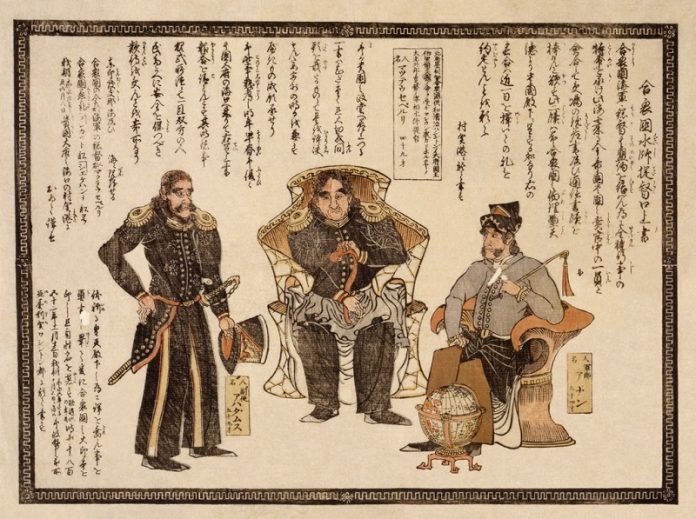
On July 8, 1853, American ships arrived in front of the Japanese capital, Edo, and began a process that ended Japan’s centuries-long isolation from the rest of the world.
Perry’s expedition is the name for the U.S. diplomatic mission in the Far East. The main goal of the expedition was to establish diplomatic relations with Japan. Japan then lived for almost 220 years in almost complete isolation from the rest of the world, and the country was ruled by a shogun (military administrator) through the samurai class. There was also an emperor, but he had no real power.
The leader of the expedition was the experienced diplomat Commodore Matthew Calbraith Perry. President Millard Fillmore ordered him to open Japanese ports to trade, even if the sea used force. This decision was prompted by the ideology of enlargement and civilization of backward nations, but also by the fact that other European powers began to expand their influence in the area, especially through trade. Perry was entrusted with four modern warships and four sailing ships.
Prior to the trip, Perry read many books about Japan and consulted with renowned Japanese scholar Phillip Franz von Siebold, who spent eight years working, studying and teaching in the Dutch enclave of Nagasaki, the only place where foreigners could trade with Japan (with strict restrictions) .
Perry’s fleet reached the city of Uraga in Tokyo Bay. He passed by Japanese ships and fired blanks from the ship’s cannons, claiming that it was in celebration of the American Independence Day. The Japanese surrounded him and demanded that he withdraw. When that didn’t work, they tried to send him to Nagasaki.
Perry refused and said he would disembark the troops and go straight to the capital Edo to hand over the letters of the American president to the emperor. The Japanese did not have the strength to drive out the American fleet, so they finally decided to allow the Americans to disembark. It was then that the shogun died, and his successor was young and ill. Therefore, American demands remained unanswered.
The Japanese soon split over what to do about opening the state to foreigners, and this eventually led to a civil war in which the shogunate was overthrown and the period of isolation ended (these events serve as the political background to The Last Samurai with Tom Cruise).




